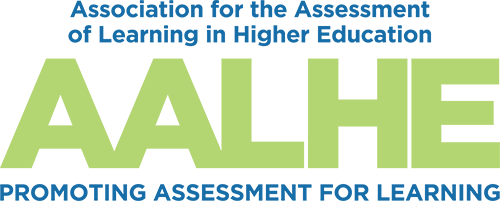- Home
- About AALHE
- Board of Directors
- Committees
- Guiding Documents
- Legal Information
- Organizational Chart
- Our Institutional Partners
- Membership Benefits
- Member Spotlight
- Contact Us
- Member Home
- Symposium
- Annual Conference
- Resources
- Publications
- Donate
EMERGING DIALOGUES IN ASSESSMENTCollaborative Rubric Development: A Cross-Divisional Approach to Evaluating Critical Thinking
October 9, 2025
AbstractThis case study describes a faculty-led initiative to develop a shared rubric for assessing Critical Thinking at the University of Hawaiʻi–West Oʻahu, a regional, four-year public institution. Led by Assessment Coordinators from Public Administration and Library Services, the rubric was created through an iterative process involving cross-campus faculty input, committee review, and consultation with external experts. The final rubric emphasizes well-reasoned arguments, evidence-based conclusions, and source attribution, rated on a three-level scale. The rubric development process highlighted strengths such as cultural alignment, faculty ownership, and institutional capacity building, alongside challenges including the need for norming. Introduction: Institutional Context and MotivationUniversity of Hawaiʻi–West Oʻahu is a regional, four-year public institution in Kapolei, Hawaii. University of Hawaiʻi–West Oʻahu’s approach to student learning is grounded in culturally responsive, community-centered practices that honor Native Hawaiian culture and traditions, promote student success, and foster continuous improvement. Institutional Learning Outcomes (ILOs) articulate the core competencies students are expected to develop throughout their academic journey, regardless of major. These outcomes are mapped to program-level learning outcomes, forming an integrated framework for academic assessment. Each academic program designates a faculty member as Assessment Coordinator, responsible for leading assessment efforts and collaborating through monthly coordinator meetings. Two such coordinators, one from Public Administration and the other from Library Services, initiated a cross-divisional effort to develop a shared rubric for assessing ILO3: Critical Thinking (University of Hawaiʻi–West Oʻahu, 2025). Their work was informed by participation in the University of Hawaiʻi at Mānoa’s Assessment Leadership Institute and aligned with a WASC Senior College and University Commission (WSCUC) recommendation to demonstrate that graduates consistently achieve stated learning outcomes (WSCUC, 2025, CFR 2.9). This article presents a case study of the resulting initiative: the development, piloting, and early implementation of a collaborative, faculty-informed rubric for assessing Critical Thinking in Capstone courses. Supported by campus level assessment leadership and shaped by campus-wide coordinator input, the project offers a model for scalable, faculty-led ILO assessment. The rubric development process highlighted strengths such as cultural alignment, faculty ownership, and institutional capacity building, alongside challenges including the need for norming. ILO3: Why Critical Thinking?ILO3 at University of Hawaiʻi–West Oʻahu defines critical thinking as the ability to “demonstrate critical thinking skills by applying information to make well-reasoned arguments or solve a problem,” using research, data, theories, or other evidence to draw logical conclusions (University of Hawaiʻi–West Oʻahu, 2025). The focus on ILO3 stemmed from several considerations: (a) It was one of only two ILOs (alongside Effective Communication) with broad curricular integration; (b) Faculty identified critical thinking as essential for graduate study and workforce readiness; (c) Students from underserved and Indigenous backgrounds bring valuable lived experiences; and (d) Assessing critical thinking affirms these knowledge systems within academic contexts. As a graduation requirement for all students, capstone courses provided an ideal opportunity to assess cumulative development of critical thinking skills. Assessment Framework and Rubric DevelopmentThe team reviewed existing critical thinking rubrics—including the AAC&U VALUE rubrics and internal faculty tools—but found many were too discipline-specific or complex for general use (AAC&U, 2009). A new rubric was developed to align with University of Hawaiʻi–West Oʻahu’s ILO3 definition, be intuitive across disciplines, integrate into existing grading systems, and support summative assessment of Capstone artifacts. Key milestones included: (a) Four rounds of revision based on campus feedback; (b) Input from the [institution] Assessment Committee; (c) Consultation with a national expert on learning outcomes assessment (Suskie, 2018); and (d) Collaboration with Capstone faculty across multiple divisions. The final rubric includes three core elements: Argumentation – Are arguments well-reasoned and supported by analysis and synthesis? Evidence-Based Conclusions – Are conclusions supported by relevant evidence? Source Attribution – Are sources and citations complete and properly acknowledged? Each element is scored on a milestone scale: Beginning, Developing, and Mastery (See Appendix). The rubric was designed as a one-line insert for easy adoption into faculty grading tools. Implementation in Capstone CoursesIn Fall 2023, the rubric was introduced in division meetings. Faculty teaching Capstone courses were invited to pilot the rubric by: (a) Incorporating it into course-level grading; (b) Identifying final assignments (e.g., research papers, portfolios) demonstrating critical thinking; and (c) Submitting artifacts from 30% of students (or all if fewer than 10 students). Faculty maintained disciplinary autonomy while applying the rubric to assess ILO3. Capstone assignments were expected to fall within the Mastery range (See Appendix). In Spring and Summer 2024, artifacts were collected and reviewed to evaluate performance on the rubric’s elements. Though this pilot did not include norming, it established a foundation for future calibrated scoring cycles. Reflections: Cultural Responsiveness and Institutional LearningSeveral themes emerged from the implementation phase that offer valuable insights for other institutions: Cultural alignment: The flexibility of the rubric allowed faculty to assess critical thinking in diverse contexts, including Hawaiian cultural research projects, policy analysis papers, and case study responses rooted in local community issues. Faculty ownership: Because faculty were part of the development process, they viewed the rubric as a tool that enhanced rather than replaced their disciplinary judgment. This sense of ownership increased the likelihood of long-term adoption. Institutional capacity building: The project catalyzed conversations about how ILOs connect with program and course learning outcomes, setting the stage for broader curricular alignment and future assessment efforts. However, some challenges emerged. Division-level buy-in varied due to differences in perception on the value of assessment at the program and institutional levels. Some faculty found it difficult to apply consistent standards without a norming process. Time constraints also limited participation in the initial pilot. These reflections will guide future cycles of ILO assessment, including the possibility of norming sessions, calibration workshops, and cross-disciplinary scoring teams. Next Steps and SustainabilityBased on the success and lessons learned from the Capstone pilot, additional Capstone and Writing-Intensive instructors will be invited to use the rubric in AY 2025–26. The ILO3 rubric has been added to the Institution’s assessment webpage so that all faculty can access and utilize it, as desired. We are recommending norming sessions within each program to develop shared interpretation of the rubric across faculty within each content area. We also will explore the rubric’s adaptation for lower-division assignments to assess growth over time. The lower division course assignments would support students’ progression along the Beginning, Developing, and Mastery continuum. Long-term, the goal is to embed ILO3 assessment into institutional culture in ways that are meaningful for faculty, actionable for programs, and aligned with University of Hawaiʻi–West Oʻahu’s mission to support student success across diverse cultural and academic backgrounds. ConclusionThis case study illustrates how a small team of assessment leaders—collaborating with faculty, administrators, and external experts—can build institutional capacity for learning outcomes assessment. The ILO3 rubric, developed through an inclusive and iterative process, now serves as a shared framework for evaluating critical thinking at University of Hawaiʻi–West Oʻahu. The project offers a replicable model for ILO rubric development and assessment that balances academic rigor with cultural relevance and central coordination with faculty autonomy. Most importantly, it highlights the potential of assessment to enhance teaching and learning in service of our students and communities. ReferencesAssociation of American Colleges and Universities (AAC&U). (2009). Critical Thinking VALUE Rubric. https://www.aacu.org/initiatives/value-initiative/value-rubrics/value-rubrics-critical-thinking Suskie, L. (2018). Assessing student learning: A common sense guide (3rd ed.). John Wiley & Sons, Incorporated: CA. University of Hawaiʻi–West Oʻahu ([institution]). (2025). Learning Outcomes. https://westoahu.hawaii.edu/assessment/toolkit/learning-outcomes/ WASC Senior College and University Commission. (2023). 2023 Handbook of Accreditation. https://www.wscuc.org/handbook2023/
Appendix
|
||||||||||||||||||||||||||||
| Critical Thinking Rubric | |||
|
Institutional Learning Outcome #3 (ILO3) - CRITICAL THINKING: Demonstrate critical thinking skills by applying information to make well- reasoned arguments or solve a problem. Critical thinking includes using research, knowledge, math, data, ideas, concepts, theories, or other information to reason or solve a problem logically. Instructions: Assign a score for Elements #1, #2, & #3. Then add scores across Elements for Total Score along Beginning, Developing, & Mastery continuum. |
|||
| Master (3 points each) – 7-9 points total | Developing (2 points each) – 4-6 points total | Beginning (1 point each) – 0-3 points total | Missing (0 points) |
| Milestone: Analyzes and evaluates information from credible sources to form an opinion, conclusion or solve a problem. | Milestone: Analyzes and/or evaluates information from limited/unreliable sources to form an opinion, conclusion or solve a problem. | Milestone: Analyzes and/or evaluates information from sources supporting one’s own viewpoint to form an opinion or conclusion or solve a problem. | |
|
Element #1: |
Element #1:
Present arguments with limited analysis or synthesis. |
Element #1:
Presents arguments with no analysis or synthesis. |
|
| Element #2:
Draw compelling conclusions based on thoughtful evaluation of evidence. |
Element #2:
Conclusions are supported by some analysis of evidence. Evidence may be insufficient or irrelevant. |
Element #2:
Conclusions are not supported by evidence. |
|
|
Element #3: |
Element #3: Sources and/or citations are incomplete and supporting evidence inconsistently acknowledged. |
Element #3: |
|

